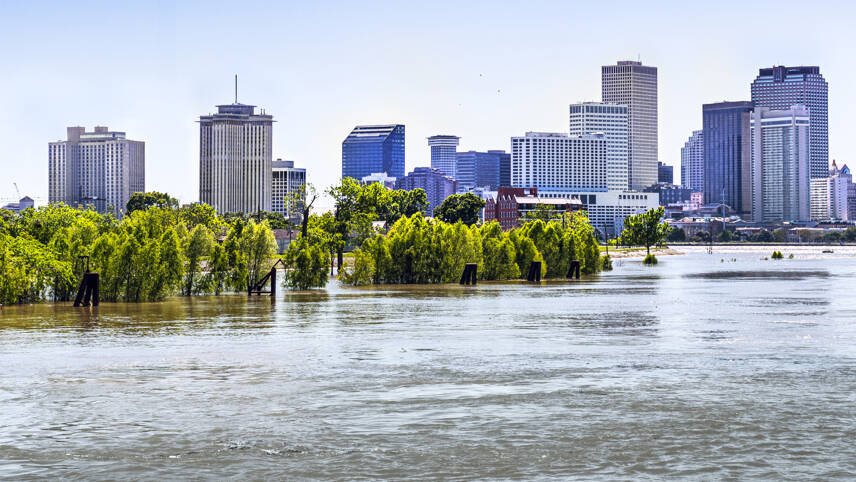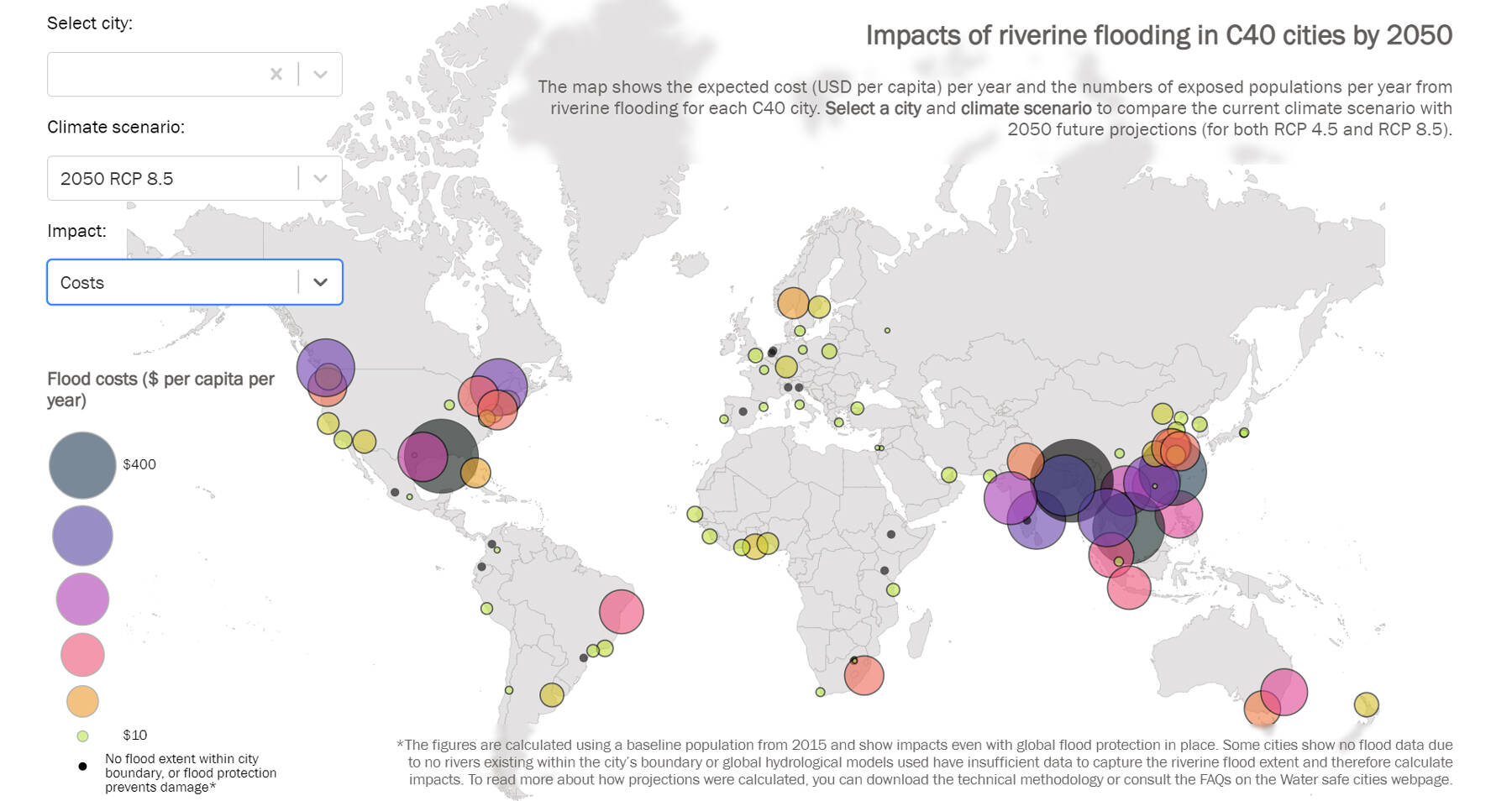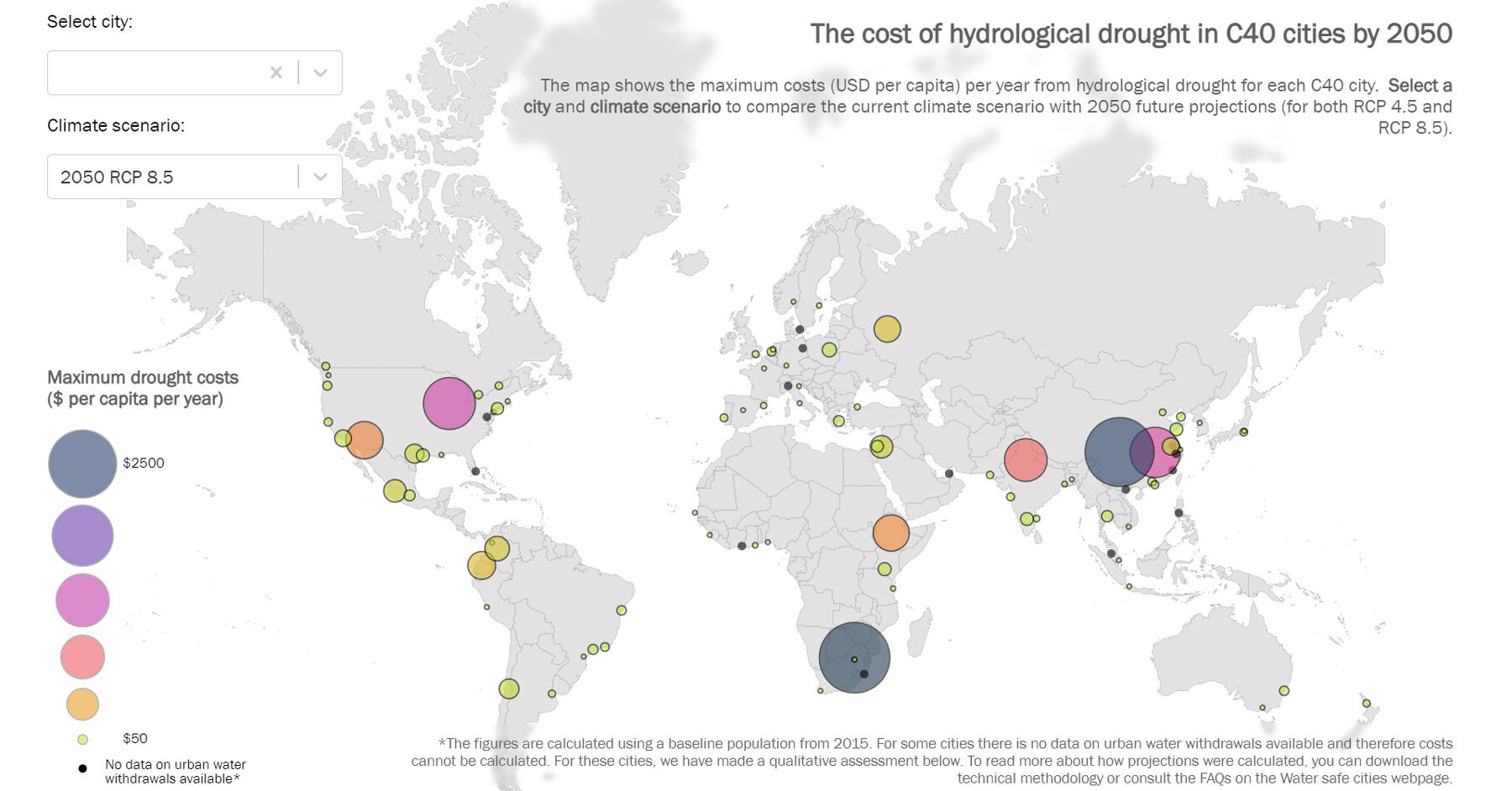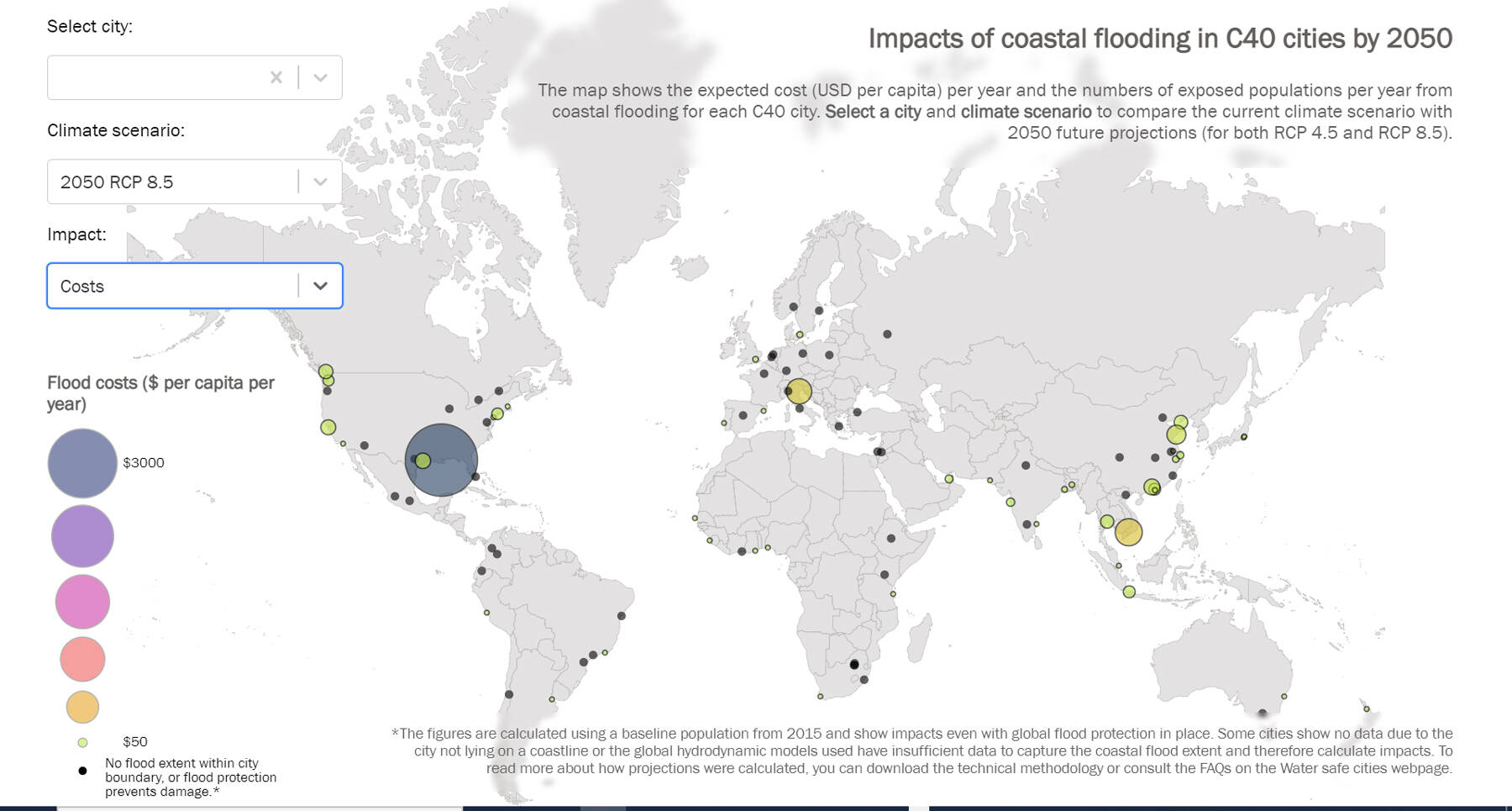Register for free and continue reading
Join our growing army of changemakers and get unlimited access to our premium content

New Orleans (pictured) is the C40 city currently paying the most in flood-related damages
The network of 96 cities has today (22 June) published its Water Safe Cities analysis, which provides a snapshot of water risks in each city at present and forecasts the potential impact of future temperature increases on urban water systems in each location.
A headline finding of the analysis, produced with support from the Grundfos Foundation, is that river flooding will affect 7.4 million people in C40 cities by 2050. Flood damages to these cities, collectively, are likely to cost at least $64bn per year from 2050. When other flood-related costs are added, including healthcare costs, river flooding will cost this network of cities $136bn per year, on average, between 2022 and 2050.
Also forecast by the analysis is an increase in severe droughts. Collectively, the C40 cities will see $111bn in damages from drought each year, on average, between 2022 and 2050.
These costs will be incurred whether or not the Paris Agreement is met, with costs rising more with each extra fraction of a degree of warming.
Here, edie rounds up some of the Water Safe Cities report’s key findings.
The global picture
- More than 300 power stations across the C40 cities are at risk of being flooded by 2050, making water stewardship an energy security issue. Half of these power stations are in the US.
- Up to 2,400 hospitals and healthcare facilities in C40 cities could be underwater by 2050. Almost half of them are in India.
- Overall, cities in the Global South are ten times more likely to be affected by flooding and/or drought by those in the Global North.
River flooding
- The C40 city in which river flooding costs are currently the highest on a per-capita basis is New Orleans ($189 per person, per year) These costs could skyrocket to $484 per person, per year, by 2050.
- In 2050, the C40 city in which river flooding costs would be the highest is set to be Dhaka ($501-$607 per person, per year).
- Other cities set to see a steep increase in river flooding costs through to 2050 include Ho Chi Minh, Fuzhou, Mumbai, Chennai, Bangkok and Kolkata.
Drought
- Currently, the C40 city facing the highest costs from drought is Tshwane ($2,371 per person, per year).
- The second-highest drought costs at present are being borne by Chengdu ($2,003 per person, per year). In developed nations, the most-affected C40 city is Chicago ($957 per person, per year)
- C40 cities where drought costs are set to rise by 20% or more by 2050 include Phoenix, Chicago, Guadalajara, Santiago, Quito, Lisbon, Barcelona, Warsaw, Amman and Wuhan.
Coastal flooding
- The C40 city currently paying the most for coastal flooding is New Orleans ($1,564 per person, per year). In 2050, these costs could be up to 109% higher.
- The C40 city set to see the steepest increase in coastal flooding costs through to 2050 is Dhaka. Costs could be up to 65 times higher than than at present.
- Other cities set to see steep rises in coastal flooding costs include Kolkata (up to 45 times increase) and Ho Chi Minh (up to 17 times increase).
- Looking at edie’s home location, the UK. London’s coastal flooding costs could be up to 138% higher in 2050 than they are at present. Drought-related costs could be up to 17% higher. Costs relating to river flooding could be more than four times higher.
London Mayor Sadiq Khan, who currently chairs C40 Cities, said: “Here in London, we are already experiencing first-hand the devastating impact of the climate crisis, with flash flooding last summer impacting homes, businesses, train stations, hospitals and bringing life in parts of the capital to a halt.
“This crisis also exacerbates social and racial injustices. The effects of the climate crisis don’t impact citizens equally – we know that it’s the most vulnerable – particularly those in the Global South – that face the worst consequences of climate change. Poverty, deprivation and health inequalities will also reduce people’s ability to prepare for, respond to and recover from flooding incidents.”
Join the conversation at edie’s webinar on climate risk and resilience on THURSDAY (23 June)
edie’s next free webinar is taking place on Thursday (23 June), focusing on how businesses can move from risk to resilience in the face of the climate crisis through reporting mechanisms, renewables procurement and stakeholder engagement.
Join this session from 1-2pm BST to hear from our sponsor, Manifest Climate, as well as expert speakers at FAIRR, Avara Foods and British American Tobacco (BAT). Click here for full information and to register.





Please login or Register to leave a comment.